How to make the perfect cacio e pepe: easy recipe with the one trick you need to know for the perfect cheese sauce and an authentic Italian taste.
Cacio e pepe is one of the most traditional and famous dishes in Rome and one of the tastiest.
It is also one of the simplest, in terms of ingredients.
As the name suggests, this pasta dish is basically made of 2 ingredients, cacio (cheese) and pepe (black pepper), but two ingredients that are so tasty and so perfectly balanced when cooked the right way, you will think you are tasting a much more complex creation!
This doesn’t mean however that making cacio e pepe is as simple as grating some cheese on top of your pasta.
If you have tried to make it at home and found yourself in front of a clumpy mess rather than a smooth sauce, you may already know what I mean!
The road to the perfect cacio e pepe is littered with failed attempts and I have myself failed to get it right many times, until I finally understood the mistake I was making.
To make smooth cacio e pepe you need to know one trick, without which the laws of physics are against you. Literally!
If you are not sure what physics has to do with pasta and how you can harness the laws of chemistry to make a perfectly smooth sauce, read on!
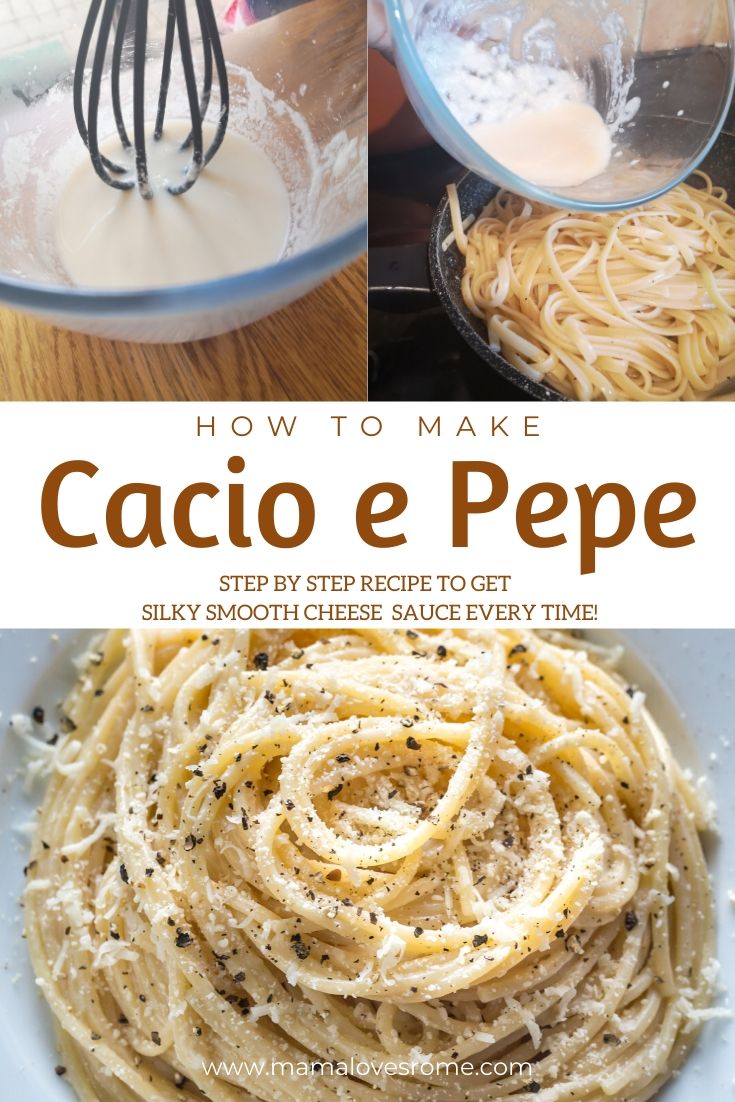
Ingredients for cacio e pepe
To make cacio e pepe, you need the following ingredients:
- Pasta trafilata al bronzo (bronze cut pasta): 80 to 100gm per person if serving as a main
- Water + salt for boiling: a generous pot that can contain the water and the pasta with space to spare. For one/ two people I use a Le Creuset Dutch over with a base of 18cm diameter
- Black pepper grains to taste
- Pecorino Romano (cacio): 50gm
You will also need some basic kitchen utensils:
- A pot for boiling your pasta water
- A large pan
- Kitchen thongs (or similar: you will need them to get the pasta out of the water)
- A heat resistant bowl
- A kitchen whip
- A cheese grater
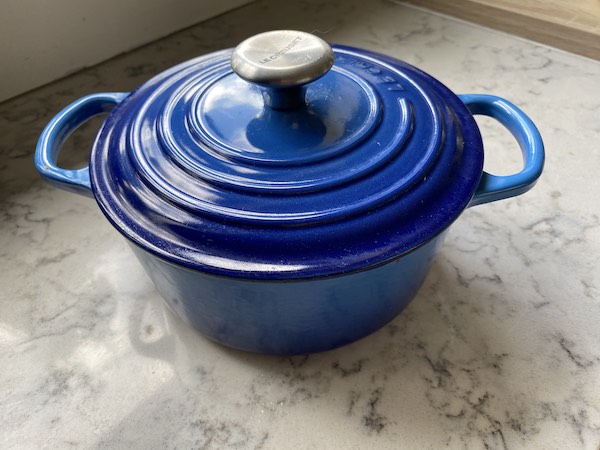
Cacio e pepe: process
Fill your pot with clean water, add salt, put onto the heat and bring to a boil
When boiling, put the pasta in and mix well so it doesn’t stick together
While the pasta boil, take a heat resistant bowl and grate the pecorino cheese in it. With a ladle, add some of the pasta water to the bowl and mix well with the aid of a kitchen whip.
Add as much water as you need to make the cream smooth. If in doubt, err on the side or dry rater than too watery: it will correct itself when you add the pasta!
The cheese cream should Ben ready in a matter of minutes, a little sooner than your pasta.
Use this spare time to get ready for the final step.
Get a large pan and put it on a hob: heat it up and add the pepper so it starts heating up. Add a little bit of the pasta water so it doesn’t stick.
As soon as the pasta is al dente, With the aid of kitchen thongs or a teether spoon, move it from the pot to the pan and mix with the pepper. Finally add the cream cheese and mix until it is coated fully.
Serve hot!
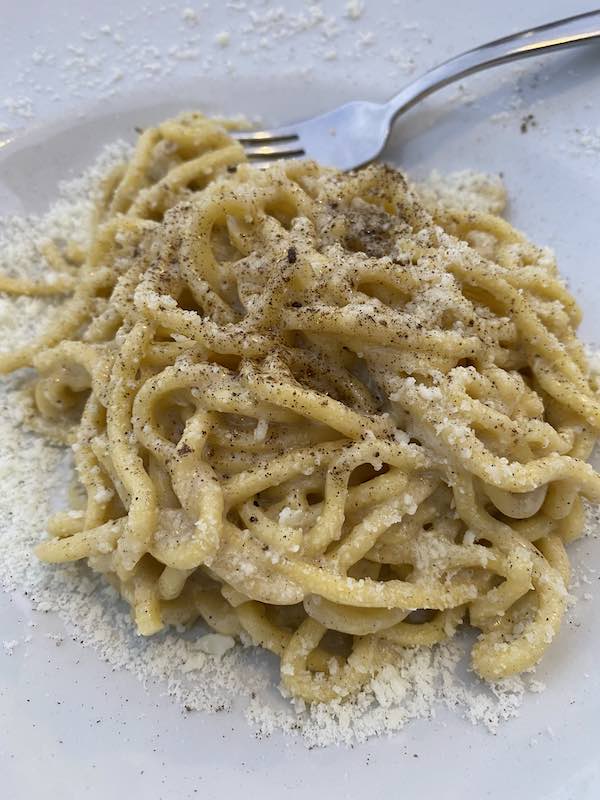
The cooking process: a couple of tips
The process to make cacio e pepe is made of a couple of steps, that have to do with the separate making of the pasta and the sauce.
Tip one: The pasta for this recipe is not cooked the traditional way but rather, you start it in a pot and then transfer onto a pan for mixing with the sauce.
This is a process common to many dishes and the key to its success is to take the pasta from the pot when it is a little more al dente than usual.
The pasta will keep cooking while in the pan with the cheese, so you want to make sure it is not already fully done or it will be overlooked and sticky mess!
Tip two: The second step is making the sauce, which you make mine pecorino and the cooking water of the pasta: nothing else!
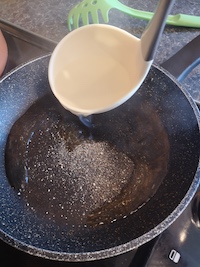
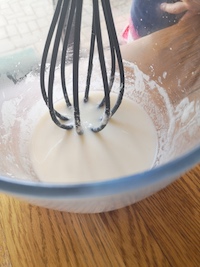
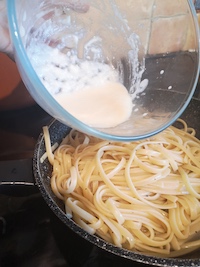
A few key things to keep in mind when cooking this dish:
- You must use he pasta water! The cooking water is the key to a successful cheese sauce: without it, it will simply not come together (see below) as the water has starch from the pasta and this will be like the glue that makes your cheese creamy
- You want to only start the sauce when the pasta is already cooking. The sauce won’t stay smooth for long so this is very much a last-minute job. What you can and should do in advance is grating your pecorino, so you already start from a nice powdery cheese.
What is the best pasta for cacio e pepe?
When choosing the best pasta for this recipe, you should look at two things: the pasta shape and the method of production.
When it comes to shape, always go for long pasta! Spaghetti and tonnarelli are the most traditional shapes but linguine and other shapes are perfect too.
When it comes to the method of production, ideally you want pasta that says on the packet ‘trafilata al bronzo’, kit ‘bronze but’.
Trafilata al bronzo is a technical term that has got to do with the creation of the pasta in the factory and is different from other pasta only in the sense that it is more rugged and rough.
It is a more porous type of pasta than the normal one and makes it easier for the sauce to stick to it.
Good to know: if you cannot get bronze cut pasta, don’t worry! Normal pasta is also ok for this recipe. Just make sure it is long (no penne or fusilli etc) to stay close to the tradition and get the best taste.

What cheese to use? What type of cheese is cacio?
The best cheese for cacio e pepe is pecorino Romano however, you are unlikely to find this in the shops with this name.
Pecorino Romano/cacio is a semi-hard sheep cheese, salty in taste and quite dry, original from the countryside around Rome and perfect for grating.
It is the star ingredient for this recipe however, should it prove impossible to find, you can make a variation of this dish using parmesan.
It will not be the same, the taste of the parmesan being quite different from that of pecorino.
However, you can follow the same process and get a tasty dish so if parmesan is all you have, you can still use the instructions in this article.
How do I keep cacio e pepe from clumping?
The big enemy of any cacio e pepe dish is the infamous clumping of the cheese. It is the death of the dish and one of those things that will simply ruin your dinner since once the cheese is in clumps, it stays that way!
However, there is a trick to avoid the disaster and this is where physics come into play.
If you use boiling water from the kettle to melt your cheese, clumps are inevitable. Hard cheeses have a certain molecular structure that doesn’t react well to hot water and prevents them from melting into a sauce.
To avoid clumps, you need to use the cooking water of your pasta! The cooking water, thanks to the pasta starch, changes the way the cheese melts and creates a perfectly smooth cheese sauce!
The trick to the perfect cacio e pepe is using the pasta water. If you use plain boiling water, no matter how quickly or how long you mix, the sauce will simply not come together. With the right water, it is done in less than a minute!
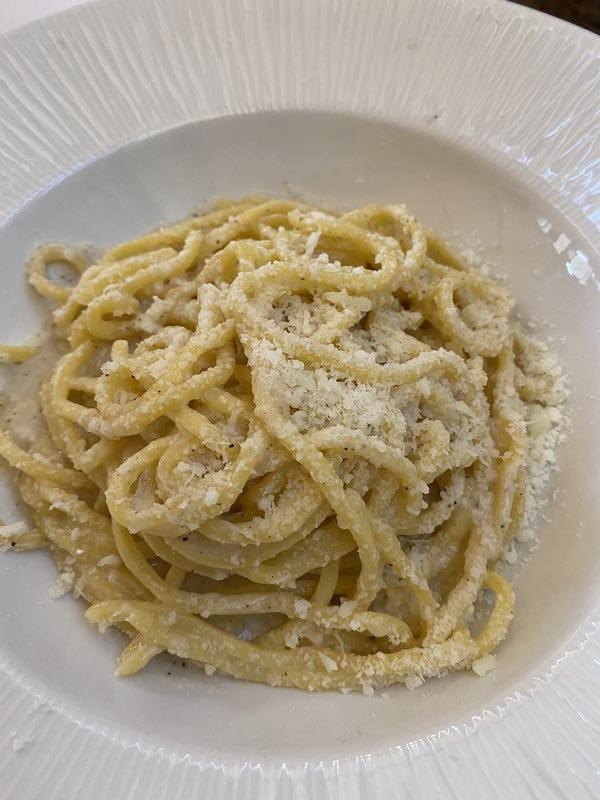
What goes well with cacio e pepe? Meal idea
How about making cacio e pepe part of a Rome-themed dinner? Things that go well with this pasta are:
- Jewish style artichokes (starter)
- Veal saltimbocca (meat)
- Puntarelle salad
- Tiramisu’ (dessert)
I hope you enjoyed this recipe and it helped you master the art of the authentic cacio e pepe, Rome style. Happy cooking!
